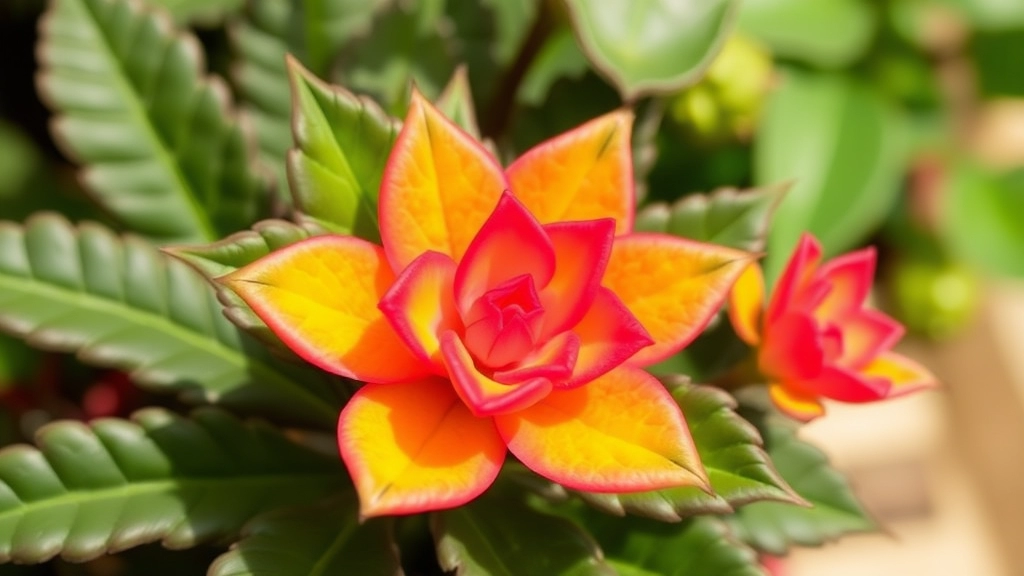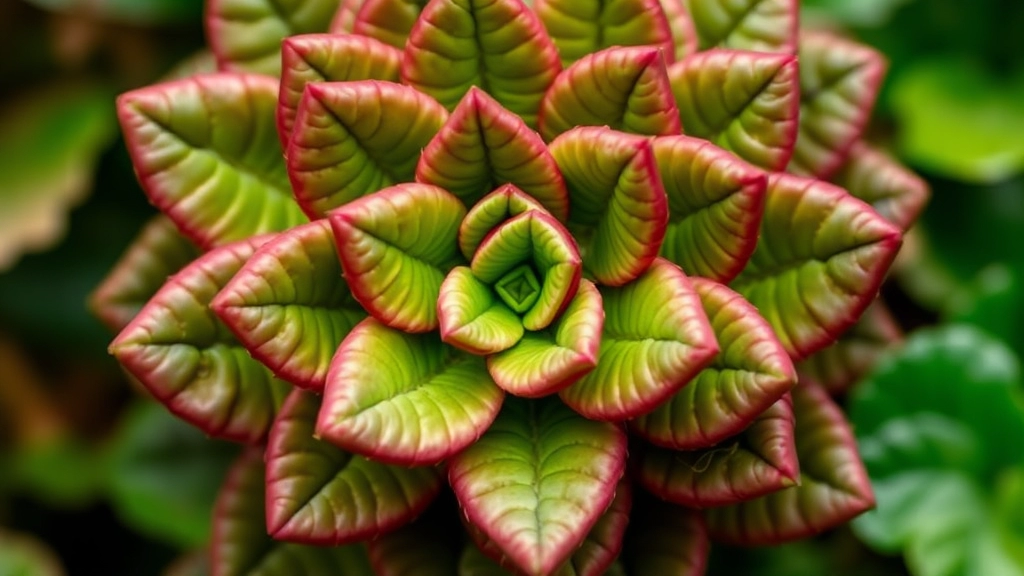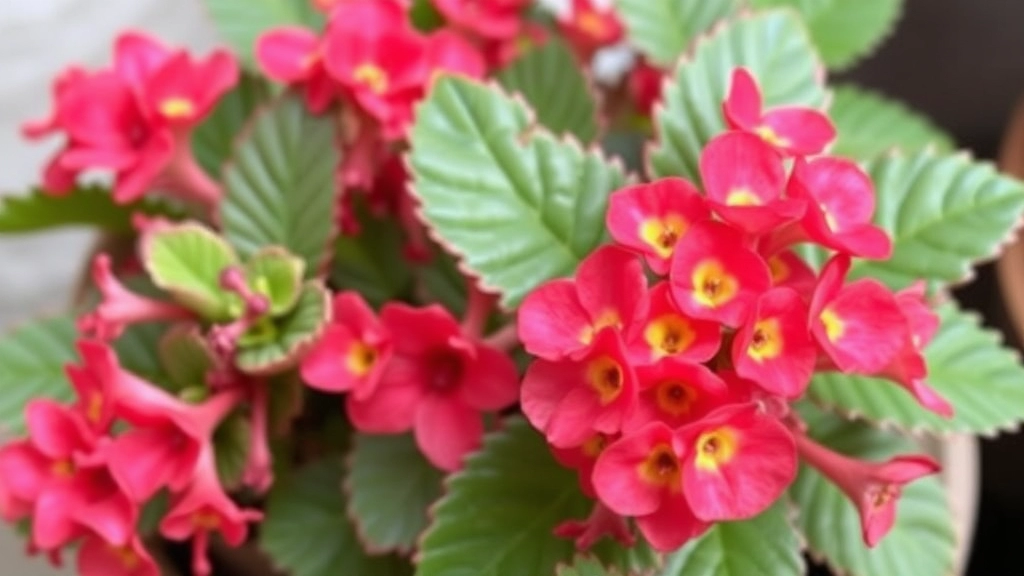Is Kalanchoe Poisonous to Touch?
Wondering, “Is Kalanchoe poisonous to touch?” You’re not alone. As a gardener and plant enthusiast, I often handle various plants, including Kalanchoe. While this succulent is known for its beauty, it’s essential to know if it poses any risks when touched. Generally, Kalanchoe is safe to handle, but some people with sensitive skin might experience mild irritation or allergic reactions, especially if they have open wounds or existing skin conditions.
Precautions When Handling Kalanchoe
To avoid any discomfort, I recommend wearing gloves while handling Kalanchoe. If you do come into contact with its sap, wash your hands thoroughly to prevent any potential skin reactions. By taking these simple precautions, you can enjoy the beauty of Kalanchoe without worrying about its potential risks.
When it comes to gardening, many plant enthusiasts wonder about the safety of handling certain species. Kalanchoe, a popular succulent, often raises questions regarding its potential risks.
Is it risky to touch Kalanchoe? The short answer is: it can be. While Kalanchoe is a visually appealing plant, it contains compounds that may cause skin irritation in some individuals.
Understanding the Risks
– **Skin Irritation**: Some people may experience allergic reactions upon contact with the plant’s sap.
– **Sensitivity Levels**: Reactions can vary greatly from person to person. What causes irritation in one individual may not affect another.
– **Preparation**: Always wear gloves when handling Kalanchoe to minimise direct contact.
Why It Matters
Being aware of these risks is crucial, especially for those with sensitive skin or allergies. For more detailed information on specific Kalanchoe varieties, you can check out the [toxicity and safety tips for Kalanchoe Pink Butterflies](https://planthq.org/kalanchoe-pink-butterflies-toxicity-and-safety-tips/). Additionally, if you’re interested in the broader aspects of caring for these plants, the [complete guide to Kalanchoe Mother of Thousands care and propagation](https://planthq.org/complete-guide-to-kalanchoe-mother-of-thousands-care-propagation/) offers comprehensive insights.
Symptoms of Skin Reactions to Kalanchoe

So, you’ve been wondering if Kalanchoe is safe to touch. It’s a valid concern, especially if you’re a keen gardener or have little ones running around.
Let’s dive into the symptoms you might experience if you come into contact with this plant.
Common Skin Reactions
- Redness and Irritation
If you notice any redness or irritation on your skin after touching Kalanchoe, that’s your body’s way of saying, “Hey, something’s not right!” - Itching or Rash
Some people might develop an itchy rash. It can feel annoying, like a bug bite that just won’t go away. - Swelling
In more severe reactions, you might see some swelling around the area you touched. This can be alarming, but it’s your skin reacting to the plant’s compounds. - Blisters
In rare cases, blisters may form. This is a sign that your skin is really not happy with the contact.
What to Do If You Experience These Symptoms
If you find yourself dealing with any of these symptoms, here’s what you can do:
- Wash the Area: Rinse the affected area with soap and water to remove any plant residue.
- Apply a Cold Compress: This can help soothe irritation and reduce swelling.
- Use Over-the-Counter Creams: Anti-itch creams or hydrocortisone can provide relief.
- Consult a Doctor: If symptoms persist or worsen, don’t hesitate to seek medical advice.
It’s crucial to keep an eye on how your skin reacts, especially if you’re handling Kalanchoe regularly.
Tips for Minimizing Contact Risks While Gardening
When it comes to gardening, many of us have concerns about the potential risks associated with certain plants, including Kalanchoe.
To ensure a safe gardening experience, here are some practical tips to minimize contact risks:
- Wear Protective Gear: Always use gloves when handling Kalanchoe. This simple step can prevent direct skin contact and reduce the risk of irritation.
- Wash Hands Thoroughly: After gardening, wash your hands with soap and water. This removes any potential irritants that may have come into contact with your skin.
- Keep Plants Out of Reach: If you have children or pets, position Kalanchoe plants in areas that are hard to access. This reduces the likelihood of accidental contact.
- Educate Family Members: Inform everyone in your household about the potential risks associated with Kalanchoe. Awareness can prevent unintentional contact.
- Use Tools: When pruning or repotting, use gardening tools instead of your hands. This keeps your skin away from the plant’s sap.
- Monitor for Reactions: If you or someone in your household does come into contact with Kalanchoe, keep an eye out for any skin reactions. Early intervention can help mitigate discomfort.
For more detailed information on specific Kalanchoe species and their care, check out our Devil’s Backbone Plant care guide and our Kalanchoe Pink Butterflies toxicity and safety tips.
Comparing Touch vs. Ingestion: The Real Danger of Kalanchoe

When it comes to Kalanchoe, many people wonder about the risks associated with touching versus ingesting this popular houseplant.
Touching Kalanchoe: What You Should Know
Touching Kalanchoe can lead to mild skin irritation for some individuals.
- Sensitivity: Those with sensitive skin may experience redness or a rash.
- Allergic Reactions: A small percentage may develop an allergic reaction, which can manifest as itching or swelling.
However, these reactions are generally mild and often resolve quickly with proper care.
Ingesting Kalanchoe: A Serious Concern
In contrast, the ingestion of Kalanchoe poses a much greater risk.
- Toxic Compounds: Kalanchoe contains compounds known as bufadienolides, which can be harmful if consumed.
- Symptoms of Ingestion: If ingested, symptoms may include nausea, vomiting, and in severe cases, heart issues.
The danger of ingestion is particularly concerning for households with pets and children, who may not understand the risks associated with eating plants.
Safe Planting Practices for Homes with Pets and Children
As we delve into safe planting practices, it’s essential to consider how our gardening choices impact the health and safety of our loved ones, especially pets and children.
Understanding the Risks
Kalanchoe, while beautiful, poses certain risks when it comes to pets and young children. The potential for skin irritation and toxicity if ingested makes it crucial to adopt safe practices in your gardening routine.
Tips for Safe Planting
- Choose the Right Location:
- Place plants out of reach of curious hands and paws.
- Consider higher shelves or hanging planters.
- Use Barriers:
- Install physical barriers like plant stands or decorative fences around your garden.
- This can deter pets from digging or nibbling on your plants.
- Educate Your Family:
- Teach children about which plants are safe and which are not.
- Encourage them to admire plants without touching.
- Opt for Non-Toxic Plants:
- Consider swapping Kalanchoe for non-toxic alternatives that are safe for pets and children.
- Research plants like spider plants or Boston ferns that are less risky.
- Regular Maintenance:
- Keep your garden tidy to prevent any accidental ingestion of fallen leaves or petals.
- Regularly check for any signs of pests or diseases that could affect plant safety.
Creating a Safe Environment
By implementing these practices, you can create a safe and enjoyable gardening space. If you’re concerned about the potential risks, you may want to explore the topic of whether Kalanchoe plants are poisonous to pets and humans. Additionally, for those who still wish to keep these beautiful plants, understanding the best tips and techniques for pruning Kalanchoe plants can help manage their growth and reduce potential hazards.
Non-Toxic Alternatives to Kalanchoe for Pet Owners
So, you’ve got furry friends or tiny tots at home and you’re worried about Kalanchoe? Totally understandable!
The good news is, there are plenty of beautiful, non-toxic plants that can brighten up your space without putting anyone at risk.
Here are some fantastic alternatives:
- Spider Plant: Super easy to care for and they even help purify the air.
- Boston Fern: A lush, green addition that thrives in humidity.
- Bamboo Palm: Adds a tropical vibe while being safe for pets and kids.
- Areca Palm: Another palm that’s pet-friendly and looks great in any room.
- African Violet: A lovely flowering plant that’s non-toxic and adds a splash of colour.
These plants not only keep your home safe but also bring a bit of nature indoors.
If you still love Kalanchoe, consider learning more about Kalanchoe Pink Butterflies toxicity and safety tips.
When choosing non-toxic plants, consider factors like light requirements and how much care they need.
It’s all about finding the right fit for your lifestyle.
And remember, always double-check if a plant is safe for your specific pets, as some animals can have unique sensitivities. For more information on safe plant choices, check out our step-by-step guide to planting Kalanchoe in a pot.
FAQs About Kalanchoe and Skin Reactions
Is Kalanchoe poisonous to touch?
While Kalanchoe is not highly poisonous to touch, it can cause skin reactions in some individuals, especially those with sensitive skin.
What are common skin reactions to touching Kalanchoe?
Common skin reactions include redness, irritation, itching, rash, swelling, and in rare cases, blisters.
What should I do if I experience a skin reaction after touching Kalanchoe?
If you experience a skin reaction, you should:
- Wash the Area: Rinse the affected area with soap and water.
- Apply a Cold Compress: This can help soothe irritation and reduce swelling.
- Use Over-the-Counter Creams: Anti-itch creams or hydrocortisone can provide relief.
- Consult a Doctor: If symptoms persist or worsen, seek medical advice.
Are the skin reactions to Kalanchoe serious?
Most skin reactions to Kalanchoe are mild and resolve quickly with proper care. However, if symptoms persist or worsen, it is important to consult a doctor.
Is Kalanchoe more dangerous to touch or ingest?
Ingesting Kalanchoe poses a much greater risk than touching it. The plant contains toxic compounds known as bufadienolides, which can cause serious health issues if consumed.
What are the symptoms of ingesting Kalanchoe?
Symptoms of ingestion include nausea, vomiting, and in severe cases, heart issues. This is particularly concerning for households with pets and children.
Can pets and children be affected by Kalanchoe?
Yes, pets and children are at risk if they ingest Kalanchoe. It is important to keep the plant out of reach to prevent accidental ingestion.
How can I prevent skin reactions when handling Kalanchoe?
To prevent skin reactions, wear gloves when handling Kalanchoe and wash your hands thoroughly afterward.
References
-
Kalanchoe Toxicity in Pets – Pet Poison Helpline
-
Kalanchoe Plant Allergies: Symptoms and Treatment – Gardening Know How
-
Toxicity of Kalanchoe Species – National Center for Biotechnology Information (NCBI)
